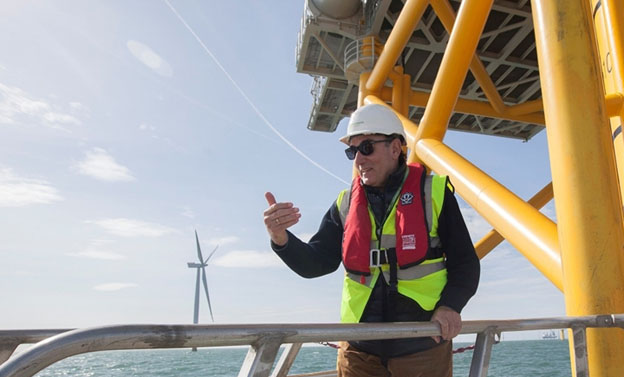From a selection of 144 Energy Country Profiles, KeyFacts Energy features Japan in the continuing series of snapshot reports, with selected information taken from our popular 'Energy Country Review' database.
Japan began producing oil in 1874 from the northwest of Honshu and produced first offshore oil in 1959. Although a number of fields still produce in Honshu and Hokkaido, output has never been substantial with basins disrupted by activity along the Pacific subduction zone. Although gas exploration has been more promising with marketed production from 1933, opportunities are also limited.
Japan has been active in the search for alternative sources such as gas hydrates and is an importer of LNG. It has achieved decreases in oil consumption but steady gas consumption growth is expected with new imports from Sakhalin I Island in Russia, and increased purchases from SE Asia and Australia.
Japan has limited domestic oil and gas resources and relies heavily on imports to meet its energy needs. Its oil and gas operations focus primarily on refining, distribution, and strategic partnerships abroad. Domestically, Japan has a few small oil and natural gas fields, mainly located in Hokkaido and Niigata, but production is minimal. The Japan Oil, Gas and Metals National Corporation (JOGMEC), a state-backed entity, supports exploration and development both within Japan and overseas. Major Japanese energy companies like INPEX and JX Nippon Oil & Gas Exploration operate some domestic facilities and participate in large-scale projects abroad to secure stable energy supplies. Japan also invests in LNG infrastructure, with multiple regasification terminals across the country, as LNG plays a key role in its energy mix.
Due to its vulnerability to energy supply disruptions, Japan maintains strategic petroleum reserves and emphasizes energy security in its national policy. Environmental concerns and the 2011 Fukushima disaster have also pushed Japan to diversify its energy sources and increase investment in renewable energy, while still maintaining a role for natural gas as a transitional fuel.
Country Key Facts
| Official name: | The State of Japan |
| Capital: | Tokyo |
| Population: | 123,083,152 (2025) |
| Area: | 377,887 square kilometers (145,902 square miles) |
| Form of government: | Parliamentary constitutional monarchy |
| Language: | Japanese |
| Religions: | Shinto, Buddhist |
| Currency: | Yen |
| Calling code: | +81 |
E&P OPERATIONS
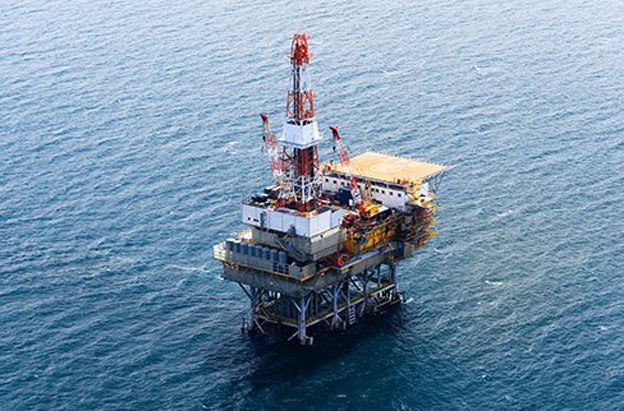
INPEX
NPEX Corporation is Japan’s largest oil and gas exploration and production company, playing a central role in the country's energy strategy. Headquartered in Tokyo, INPEX engages in upstream activities including exploration, development, and production of oil and natural gas. While its domestic operations are relatively small due to Japan’s limited hydrocarbon reserves, it does maintain production sites in areas like Niigata and Hokkaido.
In recent years, INPEX has been investing in energy transition initiatives, including hydrogen, carbon capture and storage (CCS), and renewable energy, as it adapts to global decarbonization trends while maintaining its role in ensuring Japan's energy security.
KeyFacts Energy: INPEX Japan country profile
JAPEX
Onshore and offshore, JAPEX operates across Hokkaido, Akita, Yamagata, and Niigata, encompassing 10 oil and gas fields, natural gas storage, and around 826 km of pipeline infrastructure. In June 2025, the company reorganized its domestic operations—centralizing E&P and gas supply functions into a newly created “Domestic Development Project Division” based in Niigata—to improve efficiency and reinforce its core energy supply role.
In its 2022–2030 strategic plan, JAPEX shifted from aggressive renewables expansion toward strengthening its oil and gas E&P foundation, aiming for a 50–50 profit split between E&P and new business lines—including renewables, gas supply, and carbon-neutral initiatives—by 2030.
KeyFacts Energy: JAPEX Japan country rofile
JOGMEG
JOGMEC, the Japan Organization for Metals and Energy Security, plays a key role in supporting oil and gas operations in Japan through financing, technical assistance, and strategic reserves management. Although it does not directly operate oil and gas fields, JOGMEC provides risk-sharing mechanisms and equity capital to Japanese companies involved in exploration and production both domestically and abroad. In Japan, JOGMEC supports small-scale oil and gas development, particularly in regions like Niigata and Hokkaido, where limited domestic production exists. It is also responsible for managing the country’s strategic petroleum reserves, ensuring stable energy supply during emergencies. JOGMEC promotes advanced exploration technologies, carbon capture and storage, and enhanced oil recovery methods to extend the life of Japan’s few producing fields. Additionally, it facilitates international cooperation and resource diplomacy to help Japan secure long-term access to overseas energy sources. JOGMEC’s mandate has expanded in recent years to include support for energy transition technologies, reflecting Japan’s broader push toward decarbonization and energy security.
KeyFacts Energy: JOGMEG country profile
JX Nippon Oil & Gas Exploration
JX Nippon Oil & Gas Exploration Corporation, a subsidiary of ENEOS Holdings, oversees the exploration, development and production of oil and natural gas both in Japan and abroad. Domestically, its most significant asset is the Nakajo onshore gas field in Niigata Prefecture, which despite being nearly depleted since its peak in 1964, continues to contribute around 1 % of Japan’s current daily natural gas output and is forecast to remain operational until around 2043.
Beyond Nakajo, the company maintains smaller onshore operations in locations like Hokkaido and coastal seismic blocks, supporting Japan’s marginal domestic production.
JX Nippon isn’t limited to upstream activities; it also operates midstream and downstream infrastructure—managing pipelines, storage facilities, production wells, and offloading terminals. It acquired Japan Drilling Co in early 2023—Japan’s only offshore-drilling specialist—bringing under its umbrella a fleet including three jackups and one semisubmersible rig, which significantly enhances its control over offshore exploration and carbon capture capture-and-storage (CCS) well infrastructure.
Under its "Two-Pronged" strategic vision, the firm combines conventional oil and gas production with aggressive investment in carbon management technologies such as CCS/CCUS. Its partnership with Chevron New Energies evaluates shipping CO₂ from Japan to Australia for offshore storage. Domestically, JX Nippon is collaborating with JX Advanced Metals (via JX MRE&D) on underground storage for oil and LPG and advanced CCS pilot schemes.
KeyFacts Energy: JK Nippon Oil & Gas Japan country profile
RENEWABLE ENERGY
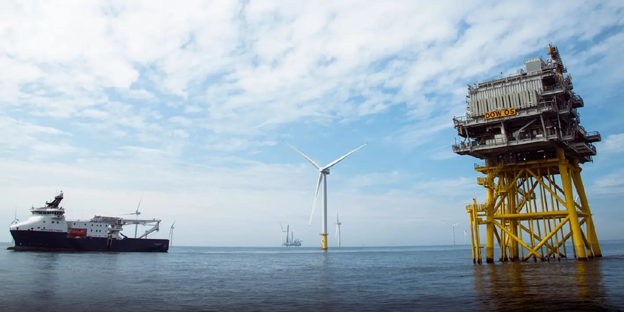
EQUINOR
Equinor’s operations in Japan focus largely on scaling offshore wind—especially floating technologies—in strategic partnership with Japanese firms, influencing policy evolution, and complementing its portfolio with hydrogen, ammonia, and CCS initiatives. Its approach aligns with Japan’s national targets and reflects a long-term commitment to contributing to the country’s energy transition.
Equinor’s presence in Japan is centred on offshore wind—particularly floating wind—alongside growing engagement in low-carbon energy value chains, notably hydrogen and ammonia. The company entered the Japanese renewables arena in 2018, establishing an office in Tokyo and partnering with local utilities like JERA and J-Power as early bidders in the country’s first offshore wind auctions. These consortia targeted fixed-bottom offshore zones off Akita Prefecture, situated among Japan’s inaugural sites for large-scale development.
With Japan aiming for 10 GW of offshore wind capacity by 2030 and up to 45 GW by 2040, two-thirds of which are expected to be floating turbines, Equinor has positioned itself as a key contributor. Drawing on its experience with Hywind Scotland and Hywind Tampen—the world’s first floating offshore wind farms—the company is leveraging that expertise to enable Japan to exploit deep-water sites, where 80 % of its offshore potential lies.
Equinor is active in industry forums and technical conferences, advocating for regulatory reforms (e.g., liberalising cabotage rules and extending concession durations) aimed at improving both cost competitiveness and investor confidence . It is also part of the Japan Floating Offshore Wind Group, which pushes for the industry to mature toward multi-gigawatt floating farms operational by 2030.
Beyond wind, Equinor is developing hydrogen, ammonia, and CCS value chains in Japan. Under a memorandum with Mitsubishi Heavy Industries, it is exploring pathways combining low-carbon hydrogen production from gas and electrolysis, integrating carbon capture and storage technologies. Its involvement in Japan’s Green Ammonia Consortium also reflects its ambition to build comprehensive low-carbon energy solutions, including maritime fuel systems.
KeyFacts Energy: Equinor Japan country profile
Eurus Energy
Eurus Energy Holdings Corporation, a subsidiary of Toyota Tsusho Corporation, is a leading renewable energy developer in Japan, with a strong focus on wind and solar power projects. As of 2025, Eurus Energy operates over 3.3 GW of onshore wind capacity across nearly 100 projects, primarily in Hokkaido and Tohoku regions, and has a significant presence in solar energy as well.
Wind Energy Projects
Eurus Energy has developed and operates several notable wind farms in Japan:
- Eurus Sandaimyojin Wind Farm: Located in Iwaki City, Fukushima Prefecture, this 34 MW project commenced operations on August 29, 2024. It features nine 4.2 MW Vestas turbines and is expected to generate electricity equivalent to the annual consumption of approximately 16,000 average households, reducing CO₂ emissions by 33,000 tons per year.
- Eurus Kawanishi Wind Farm: Situated in Wakkanai City and Toyotomi Town, Hokkaido, this 64 MW facility began operation on January 15, 2024. It comprises 15 Siemens Gamesa turbines, each with a capacity of 4.3 MW, and is part of the larger Dohoku Wind Power Generation Project, which aims to install a total of 107 wind turbines across six wind farms in northern Hokkaido.
- Eurus Yuchi Wind Farm: Also part of the Dohoku Wind Power Generation Project, this 72.2 MW wind farm in Wakkanai City began commercial operation on February 3, 2025. It consists of 18 4.2 MW GE Vernova turbines, with output limited due to grid constraints.
- Eurus Odanosawa Wind Farm: Located in Higashidōri Village, Aomori Prefecture, this project involves the repowering and expansion of the existing 13 MW wind farm to a capacity of 43 MW. The new facility is expected to commence operations in March 2027.
Solar Energy Projects
In addition to wind energy, Eurus Energy has made significant investments in solar power:
- Eurus Rokkasho Solar Park: Situated in Rokkasho, Aomori Prefecture, this 148 MW solar power plant was commissioned on October 1, 2015. It was previously the largest operational solar plant in Japan and remains a significant contributor to the country's renewable energy capacity.
Strategic Initiatives
Eurus Energy is actively involved in addressing grid infrastructure challenges to facilitate the integration of renewable energy:
- North Hokkaido Wind Energy Transmission Corporation: To overcome transmission bottlenecks in wind-rich Hokkaido, Eurus Energy, along with Cosmo Eco Power and other partners, established this corporation, which began operating power grid and battery storage facilities in April 2023.
KeyFacts Energy: Eurus Energy Japan country profile
Iberdrola
Iberdrola’s involvement in Japan is centered on its aggressive expansion into the offshore wind sector, driven by the nation’s ambitious goals to decarbonize and reduce dependence on nuclear energy.
Since acquiring Acacia Renewables in September 2020—renamed Iberdrola Renewables Japan in April 2021—the company has built a strong foundation for offshore wind development. The acquisition included two major farms (1.2 GW) under development and four additional projects in the pipeline totaling 2.1 GW, largely located in southwestern Japan. Through a partnership with Macquarie’s Green Investment Group, Iberdrola entered the Japanese market with 3.3 GW of offshore wind capacity planned.
One flagship initiative is the 600 MW Seihoku‑oki offshore wind farm in Aomori Prefecture, which Iberdrola is co-developing alongside Cosmo Eco Power and Hitz Engineering. This project is slated for auction in round 3 of Japan’s capacity awards and exemplifies Iberdrola’s strategy of early entry into new market segments.
Iberdrola is part of the GK Happo‑Noshiro consortium—with Japan Renewable Energy and Tohoku Electric Power—to deliver a 375 MW offshore wind farm off the Akita coast. This fixed-bottom turbine project, comprising 25 units of 15 MW each, won approval in March 2024. Construction is slated for 2026 with operations targeted by mid‑2029.
Through these efforts, Iberdrola contributes directly toward Japan’s target of deploying 10 GW of offshore wind capacity by 2030 and up to 45 GW by 2040—a milestone outlined in Japan’s national energy strategy following the 2011 Fukushima incident.
KeyFacts Energy: Iberdrola Japan country profile
Japan Wind Development
Japan Wind Development Co. (JWD), established in 1999 and now part of INFRONEER Holdings, is Japan’s most prominent independent wind developer. With its headquarters in Tokyo (Kasumigaseki Building, Chiyoda-ku), the firm delivers end-to-end wind power services—from site assessment and environmental impact studies through construction, turbine procurement, operation, and maintenance.
Domestically, JWD has deployed over 570 MW through approximately 293 turbines across more than 30 onshore wind farms. Some of their notable operational projects include Chōshi Byobugaura (1.5 MW), Rokkashomura phases I and II (totalling ~32.85 MW), ReENE Matsumae (36 MW), Shiribetsu (25.3 MW), Noheji Mutsuwan (36 MW), and Yokohama‑machi (38 MW). These installations were commissioned between 2001 and 2023.
Since January 2024, JWD has been owned by INFRONEER following Bain Capital’s sale for ¥218.9 billion, solidifying JWD’s leadership in Japan’s wind sector.
KeyFacts Energy: Japan Wind Development Japan country profile
JERA
JERA, Japan’s largest power company (a TEPCO–Chubu Electric JV), has been strongly expanding into renewable energy, with a focus on offshore wind, solar, battery storage, hydrogen/ammonia, and corporate decarbonization services.
One major initiative is its participation in offshore wind farms. In December 2024, a JERA‑led consortium—including Green Power Investment (GPI) and Tohoku Electric—was selected by METI/MLIT to develop a 615 MW offshore wind project off Aomori Prefecture. This project is scheduled to start operations in June 2030.
JERA also commissioned the 112 MW Ishikari Bay New Port offshore wind farm in Hokkaido in 2024, acquired through its purchase of GPI and NTT Anode Energy.
To coordinate its global clean power ambitions, JERA launched JERA Nex in April 2024: a UK‑headquartered renewables platform targeting 20 GW by 2035. JERA Nex manages a diversified 3.4+ GW portfolio that spans offshore wind, onshore wind, solar, and batteries—with Japan projects like Ishikari Bay, Akita Oga/Katagami, and Aomori included.
In June 2025, JERA partnered with MUJI (Ryohin Keikaku) to form MUJI ENERGY, planning ~13 MW of solar capacity and virtual PPAs to support MUJI’s environmental goals
Hydrogen and ammonia are key parts of JERA's decarbonization roadmap. Since 2021, JERA has been testing ammonia co‑firing at its Hekinan and Hekinan/Futtsu thermal plants (20 % ammonia blend). In the U.S., it’s working with ExxonMobil to import low‑carbon ammonia (up to 500 kt/year from a Texas plant planned by 2028). These steps support its goal of “JERA Zero CO₂ Emissions 2050.”
JERA is investing heavily across the energy transition. As of May 2024, it announced a 5 trillion ¥ (~$32 bn) investment plan by 2035, aiming for 20 GW renewables, 7 Mt hydrogen/ammonia storage, continued LNG, and complete phase-out or conversion of coal plants by the 2040s.
KeyFacts Energy: JERA Japan country profile
Mitsui & Co
Mitsui & Co. has become one of Japan’s most prominent renewables developers and enablers, drawing on its global project experience and extensive on-the-ground presence to support solar, wind, geothermal, and next-generation energy infrastructure.
Starting with solar, in June 2023 Mitsui began long-term purchases from rooftop PV systems operated by Japan Benex across Saitama, Chiba, and Kanagawa, transitioning facilities from Japan’s FIT (feed-in tariff) scheme to a market-linked FIP (feed-in premium) framework. They also provide output forecasting and balancing services to integrate clean power into the grid. Further under its Plant Systems subsidiary (MPS), Mitsui develops and operates large-scale “mega-solar” assets in unused lands, plus small wind, biomass, and hydro projects.

Onshore wind is another focus. Mitsui holds about 1,300 MW of domestic wind generating capacity as of March 2025, alongside 1,145 MW of solar, 816 MW of hydropower, and smaller biomass/geothermal assets. Renewables make up roughly 35% of its total ~9.5 GW power portfolio—surpassing its stated 2030 target of 30%.
In geothermal, Mitsui has advanced the Katatsumuri Yama field near Yuzawa City (Akita Prefecture): alongside INPEX and Idemitsu Kosan, Mitsui is building a 15 MW double-flash plant scheduled to begin operation in March 2027 with JOGMEC support.
Mitsui is also active in offshore wind. In December 2023, it partnered with RWE and Osaka Gas to develop a 684 MW fixed-bottom offshore wind farm off Niigata Prefecture—expected to begin commercial operation by mid-2029.
Beyond project development, Mitsui’s Energy Solutions Business Unit pursues distributed renewable energy generation, storage systems, energy management services, EV infrastructure, virtual power plants, and electricity retail/trading. They’ve invested in global technologies such as U.S.-based Forefront Power, hydrogen/ammonia, SAF/biofuels, carbon credits, CO₂ utilization, and advanced digital platforms.
Mitsui also brings corporate engineering strength by offering energy management and decarbonization packages—including on-site/off-site solar, environmental-value certificates, and grid balancing services—to industrial and local government clients.
By combining large-scale project execution, distributed-energy solutions, next-gen energy fuels (hydrogen, ammonia, SAF), and digital grid services, Mitsui supports both Japan's energy transition and its own target of reaching net-zero emissions by 2050 through diversified renewable capacity.
KeyFacts Energy: Mitsui Japan country profile
NTT Anode Energy
NTT Anode Energy is shaping Japan’s energy transformation by building and operating renewables and battery storage at scale, pioneering smart grid solutions like V2G and VPPs, securing long‑term corporate renewable supply contracts, and harnessing NTT’s engineering strengths to accelerate national decarbonization goals.
NTT Anode Energy is the NTT Group’s dedicated platform for scaling renewable energy, storage, and smart energy solutions across Japan since its founding in June 2019. Headquartered in Tokyo, it integrates four core functions: green power generation, aggregation (including VPPs), energy retailing, and engineering solutions.
The company has aggressively expanded its renewables portfolio:
- It acquired Green Power Investment Corporation—formerly Pattern Energy’s Japanese arm—in mid‑2023, gaining onshore wind, solar, and the Ishikari Bay offshore wind farm (112 MW, paired with 180 MWh battery storage off Hokkaido)
- Its green power arm is targeting around 3.8 billion kWh of renewable electricity annually by 2030 to support both NTT’s internal goals and wider societal decarbonization.
In energy storage and smart grid:
- Between January and May 2025, NTT successfully commissioned three grid-scale battery stations in Saitama Prefecture—totaling 15.3 MWh—and has a pipeline of approximately 340 MWh across 23 sites nationwide.
- The company launched a turnkey BESS service in July 2025 to provide system builds and operations for corporate and utility clients.
- It collaborates with Shizen Energy on EV smart charging/discharging systems, enabling peak‑shaving and virtual power plant capabilities
Through its engineering solutions division, the company leverages NTT’s telecom infrastructure expertise to design, deploy, and maintain renewable and storage systems for clients and the NTT Group itself.
NTT Anode Energy’s efforts form a key part of NTT’s “Green Innovation toward 2040” strategy, which aims for carbon neutrality by 2040 via both decarbonizing internal operations and enabling emissions reductions across society.
KeyFacts Energy: NTT Anode Energy Japan country profile
Ørsted
Ørsted’s Japanese footprint centers on two main consortia: one with TEPCO for the Chōshi offshore wind area, and another with JWD and Eurus focused on Akita Prefecture. Its Tokyo team is actively supporting permitting, technical surveys, and stakeholder engagement, though project awards have met mixed fortune so far. These engagements reflect Ørsted’s broader ambition to help Japan meet its offshore wind targets by exporting its global expertise while integrating into the local market and supply chains.
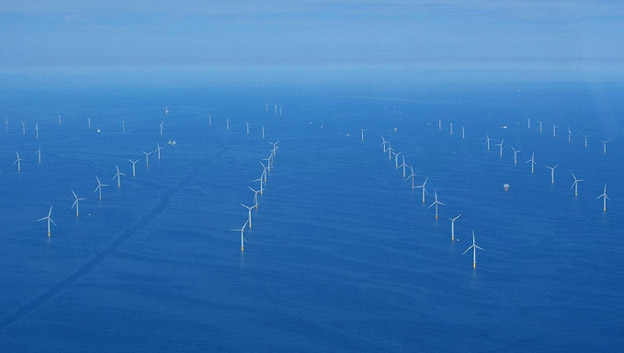
Ørsted has established a significant presence in Japan’s offshore wind sector, concentrating on fixed-bottom projects in collaboration with trusted Japanese partners. It entered the market in 2019, opening a Tokyo office and forming a joint venture with TEPCO (through TEPCO Renewable Power) to bid on the Chōshi offshore wind site, leveraging TEPCO’s local expertise and Ørsted’s global track record.
Around the same period, Ørsted teamed up with Japan Wind Development (JWD) and Eurus Energy to pursue the Noshiro/Mitane/Oga and Yurihonjo areas off Akita Prefecture, participating in landmark first-round auctions under Japan’s Offshore Renewable Energy Act. These sites have progressed through environmental impact assessments, seabed surveys, and wind monitoring in preparation for potential development.
Despite its commitments, Ørsted’s Akita consortium was unsuccessful in the second round of auction results released in December 2023, and those projects have been cancelled. Nevertheless, the joint ventures and the establishment of a permanent Tokyo office signal Ørsted’s long-term strategic intent in Japan’s offshore wind market.
These operations align with Japan’s national goal of deploying up to 45 GW of offshore wind by 2040, with Ørsted working closely alongside key Japanese firms, sharing both technical know-how and community engagement experience.
KeyFacte Energy Industry Directory: Ørsted Japan country profile
Osaka Gas
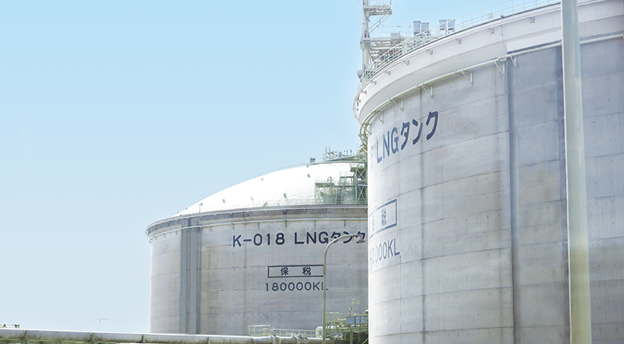
Osaka Gas combines asset development, technology innovation, and corporate PPAs to build a robust renewables platform that reinforces grid stability, supports decarbonization, and positions the company as a leader in Japan’s energy transformation.
Osaka Gas—part of the Daigas Group—runs a diverse and growing renewables portfolio across Japan spanning solar, wind, biomass, hydrogen, and energy storage, integrating projects with power generation and energy services.
Beginning with solar, Osaka Gas focuses on small- and medium-scale projects developed through joint ventures like GDsPJ2 LLC with GPSS (five sites totaling ~7 MW, operational by Feb 2026). It also has a 50% stake in a 15 MW FIP-based solar portfolio across 14 sites in Ibaraki, supplying power via corporate PPAs with Kyoto Sangyo University and Nippon Shokubai. Additionally, in partnership with Sonnedix, Osaka Gas holds a 40% share in two FIT-certified solar plants in Iwate supplying ~30 MW total—FIT contracts lasting until 2040.
Onshore wind activity includes ownership in eight farms (~140 MW total), such as Shiribetsu Wind (27 MW), which commenced operations in September 2021. A 40 MW project in Mutsu Bay (Noheji) is also in development.
The company is exploring offshore wind through a strategic agreement with Acacia Renewables (Macquarie) to co-develop projects leveraging Osaka Gas’s onshore experience. It's also part of a 684 MW offshore wind consortium with RWE and Mitsui in Niigata Prefecture, targeting commissioning by mid‑2029.
Osaka Gas engages in innovative hydrogen and methane technologies. It has built a prototype SOEC methane synthesis cell (85–90 % efficiency) to convert CO₂ and renewables into methane for city gas, and was set to trial at Expo 2025 a bioreactor combining waste and CO₂ to produce methane on site.
In biomass and hydro, the company supports the Hirohata biomass plant (75 MW) and small hydro installations.
By March 2026, Osaka Gas aims to contribute more than 3.57 GW of renewables (solar, wind, biomass, hydro) domestically and abroad, targeting a total of 5 GW by 2030 as part of its carbon neutrality goals.
KeyFacts Energy: Osaka Gas Japan country profile
RWE Renewables
RWE Renewables entered the Japanese market in 2019 with a focus on large-scale offshore wind projects, leveraging its global expertise to support Japan’s ambitious renewable energy goals. The company’s Tokyo office now includes over 50 offshore-wind specialists who work collaboratively with Japanese partners to develop and manage projects across the country.
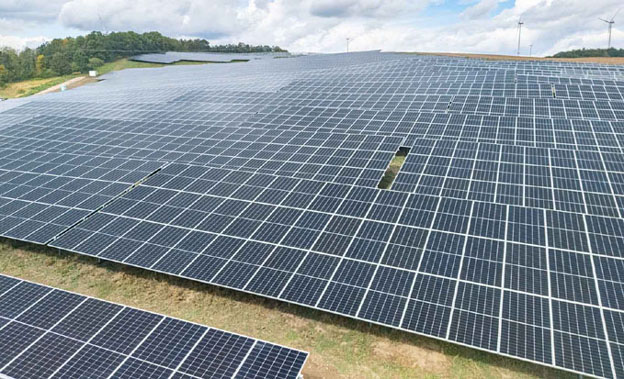
RWE Renewables’ Japan strategy encompasses:
- Establishing a strong on-the-ground presence in Tokyo, with a large local offshore wind team
- Securing a flagship 684 MW fixed-bottom offshore wind project in Niigata, targeting 2029 operation
- Developing significant additional projects in Hokkaido (600 MW and up to 1.68 GW)
- Co-developing the 840 MW Yurihonjo offshore project
- Supporting Japan’s transition to large-scale offshore wind as the country aims for 45 GW by 2040
A landmark achievement for RWE came in December 2023, when it joined forces with Mitsui & Co. and Osaka Gas to win a 684 MW fixed-bottom offshore wind concession in Niigata Prefecture—part of Japan’s second offshore auction round. This consortium plans to deploy approximately 38 turbines, targeting commercial operation around June 2029.
In early 2025, RWE and Kansai EPCO began environmental impact assessments for a potential 600 MW project off Shimamaki’s coast, which could feature 14–24 MW turbines. They also initiated planning for a much larger, up to 1.68 GW fixed-bottom offshore wind project in the “Sea Area Offshore Hiyama,” submitted in late 2024.
In addition, RWE co-develops the Yurihonjo Offshore Project with Kyuden Mirai Energy—an 840 MW wind farm slated to begin construction in 2026 and start operations by 2030.
KeyFacts Energy: RWE Renewables Japan country profile
TEPCO
TEPCO, through its subsidiary TEPCO Renewable Power, has built a broad renewable portfolio across Japan—covering solar, wind (onshore and offshore), hydro, pumped storage, and geothermal energy. Here's a cohesive summary:
TEPCO Renewable Power began operations independently in April 2020. It manages Japan’s largest RPS-regulated portfolio, handling about 10 GW of solar, wind, hydro, and offshore wind facilities both domestically and abroad, with ambitions to scale to 6–7 GW in Japan by the early 2030s.
In the solar segment, TEPCO operates several utility-scale plants:
- Ukishima Solar (7 MW) and Ogishima (13 MW) in Kawasaki, both launched in late 2011
- Komekurayama Solar (10 MW) in Yamanashi, commissioned in January 2012. Together these sites provide approximately 30 MW capacity.
For wind power, TEPCO runs the Higashi‑Izu onshore wind farm in Shizuoka (11 turbines, ~18 MW), active since August 2015.
Hydropower and pumped storage feature prominently in TEPCO’s renewables strategy:
- Kazunogawa Pumped Storage in Yamanashi (~1,600 MW capacity, with three turbines active totaling 1,200 MW, and a fourth expected soon) provides grid balancing.
- Shin‑Takasegawa Pumped Storage in Nagano (four 320 MW units = 1,280 MW) also contributes to load management.
Geothermal efforts include TEPCO’s first stake in the Oyasu Geothermal/Katatsumuri Yama project in Akita Prefecture—a 15 MW plant supported by JOGMEC, slated for March 2027 operation.
TEPCO additionally participates in floating offshore wind R&D under NEDO’s Green Innovation Fund, targeting cost reductions in offshore turbine technology.
Through this diverse portfolio, TEPCO supports Japan’s energy transition goals with scaled solar and wind capacity, large storage/hydro systems and advancing geothermal and offshore wind tech—all integral to carbon‑neutral efforts and grid resilience.
KeyFacts Energy: Tepco Japan country profile
KeyFacts Energy: Country Profile
 KEYFACT Energy
KEYFACT Energy
